Sony Vegas Pro 9 for Pro Editing
 Sony Vegas Pro 9, the latest version in the Sony Creative Software line of professional video and audio editing software, was released in May 2009. The product also includes DVD Architect 5, which adds support for Blu-ray Disc authoring.
Sony Vegas Pro 9, the latest version in the Sony Creative Software line of professional video and audio editing software, was released in May 2009. The product also includes DVD Architect 5, which adds support for Blu-ray Disc authoring.
Vegas demonstrates interesting developing trends in professional video editing software, from the interface to features to performance.
The most visible change is to the interface, with a darker palette. The more muted look fits better in darkened editing rooms and provides a more neutral background for working with clips. This has become popular as well in consumer applications like the Adobe Elements products, since the colors pop more against the plainer background.
Inside, Vegas is showing the way into higher performance computing and extended precision by including both the standard 32-bit application, and a native 64-bit version of the application, opening up the ability to address and processes more frames and higher-res frames directly in memory. And for extra precision during final rendering, Vegas supports shifting up from the standard 8-bit video mode to 32-bit floating point arithmetic and extended color space modes.
Another clear trend in Vegas Pro 9 is broader support for professional camera and imaging formats beyond broadcast to motion pictures, now supporting up to 4K resolution (4096x4096). Vegas supports import and native editing from the RED ONE digital cine camera, and has native import of Sony XDCAM EX cameras. It captures XDCAM-compatible MXF files from SD/HD-SDI sources. It has native import and export for the DPX and OpenEXR high-precision image formats. And it supports working with gigapixel-sized images.
More generally, Vegas tracks the transition from capturing from linear tape to importing from digital cameras with the new Device Explorer to browse AVCHD and XDCAM cameras to select clips for native import and editing.
For actual video editing, Vegas Pro 9 adds new professional lighting effects and workflow enhancements to work more efficiently. But it also adds automated assists, including automated adjustments to the source media to better match your project or rendering settings (i.e., though cropping or padding the frame size or adjusting the interlacing).
And Vegas continues to build on its heritage in audio editing -- Vegas 9 extends the precision of audio edits so that audio-only edits are no longer quantized to the nearest frame boundary by default.
The range required for professional videographers continues to broaden, from broadcast to film resolution, SD to HD to Internet videos -- and Vegas Pro 9 steps up to meet those needs for professional formats and higher performance.
Sony Vegas Pro 9 is currently available for around $599. Sony also has released a separate Vegas Pro Production Assistant plug-in with automation and productivity tools for broadcasters and editors, priced around $169. This automates a variety of frequent tasks and processes and creates customized presets for batch processing.
Sony offers trial version downloads of its products from its website, including Vegas Pro and DVD Architect. Current users can download the recent product updates for the latest versions and bug fixes.
See my full article: Walkthrough: Sony Vegas Pro 9
See summaries of video applications and versions in my Video Editing Software Gallery.
![]() Find Sony Vegas Pro 9 on Amazon.com
Find Sony Vegas Pro 9 on Amazon.com

 Meanwhile, Sony is following the same path with portable players, positioning its
Meanwhile, Sony is following the same path with portable players, positioning its 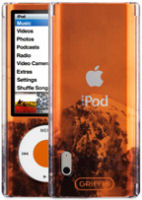 So
So  Instead, you can pack portable sound like the new
Instead, you can pack portable sound like the new  The new Jawbone Prime is the latest generation in the line, with even better noise elimination, especially in reducing the effect of wind noise (see
The new Jawbone Prime is the latest generation in the line, with even better noise elimination, especially in reducing the effect of wind noise (see  Compared to the
Compared to the  Pure Digital has had tremendous success with its
Pure Digital has had tremendous success with its  Which brings us to the new Flip MinoHD 120 minute model, just announced today. This doubles the recording time of the original Flip MinoHD 60 min. model, increases the screen size to 2 inches (matching the Ultra), and adds a HDMI connector so you can play videos directly on an HDTV.
Which brings us to the new Flip MinoHD 120 minute model, just announced today. This doubles the recording time of the original Flip MinoHD 60 min. model, increases the screen size to 2 inches (matching the Ultra), and adds a HDMI connector so you can play videos directly on an HDTV. The
The 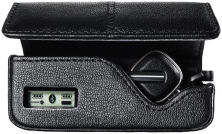 Beyond the looks, the clever element of the Discovery 975 is the included charging carrying case. This is a small padded case that includes a rechargeable battery, so you can dock the headset to recharge, tripling the headset talk time when on the road.
Beyond the looks, the clever element of the Discovery 975 is the included charging carrying case. This is a small padded case that includes a rechargeable battery, so you can dock the headset to recharge, tripling the headset talk time when on the road.  Compared to some other sexy designs, the
Compared to some other sexy designs, the 
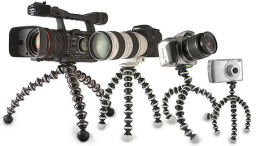 The
The 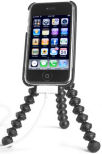 But the focus at
But the focus at  But the new clever extension to the line is the Gorillatorch hands-free light, a bright LED light (maximum 65 lumens) with the now-familiar flexible legs, for $29. It is water resistant, and has a dimmer switch to control the light intensity and extend the battery life (from some 20 to 80 hours on 3 AAA batteries).
But the new clever extension to the line is the Gorillatorch hands-free light, a bright LED light (maximum 65 lumens) with the now-familiar flexible legs, for $29. It is water resistant, and has a dimmer switch to control the light intensity and extend the battery life (from some 20 to 80 hours on 3 AAA batteries).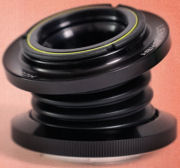 The current Lensbaby line offers three lens models, depending on the amount of hacking you like -- precise setup with the Lensbaby Composer, as the ball and socket design holds the position ($270), fast and loose with the Lensbaby Muse, as you manually set and hold the position ($100 / $150), or methodical with the Control Freak, which you set up, lock in, and then can further fine-tune both the focus and tilt.
The current Lensbaby line offers three lens models, depending on the amount of hacking you like -- precise setup with the Lensbaby Composer, as the ball and socket design holds the position ($270), fast and loose with the Lensbaby Muse, as you manually set and hold the position ($100 / $150), or methodical with the Control Freak, which you set up, lock in, and then can further fine-tune both the focus and tilt.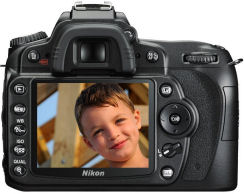 The
The 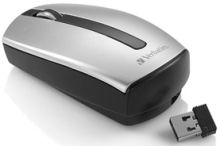 So try out the new
So try out the new  But what if the bulk of the mouse could disappear completely? This is the magic of the
But what if the bulk of the mouse could disappear completely? This is the magic of the